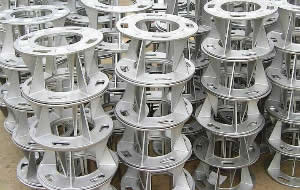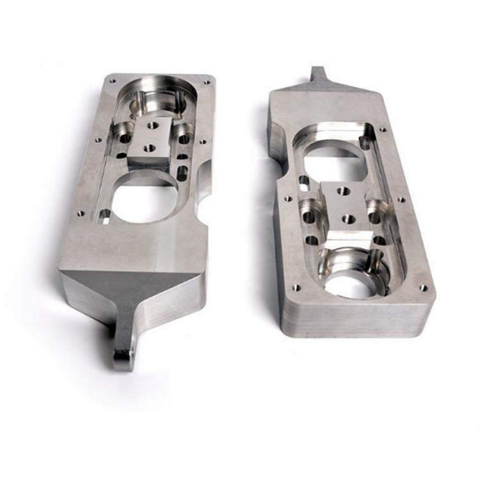Aluminum Casting Explained: Secret Realities and Insights for Sector Professionals
Aluminum casting acts as a crucial procedure in modern manufacturing, forming elements throughout numerous fields. Its varied methods, such as sand and die casting, accommodate various manufacturing needs. The one-of-a-kind residential or commercial properties of aluminum alloys boost their applicability, yet challenges remain in preserving high quality and efficiency. Comprehending these elements is vital for market professionals. What are the current improvements and best techniques that can additionally maximize this process?
Overview of Aluminum Casting Processes

Crucial element of aluminum casting procedures consist of the prep work of molds, which may be made from sand, metal, or ceramic products, depending upon the meant use. Additionally, temperature level control is critical to assure correct melting and solidification of aluminum.
The casting procedure enables for detailed styles and can achieve high degrees of dimensional accuracy. As soon as cooled down, the castings might undergo ending up procedures such as machining or surface therapy to fulfill particular efficiency requirements. Generally, aluminum casting acts as a flexible manufacturing method, effectively satisfying the diverse needs of various sectors.
Types of Aluminum Casting Approaches
In the domain of aluminum casting, numerous methods are employed to accomplish various results. Sand casting techniques supply adaptability and cost-effectiveness for complicated shapes, while die casting processes offer high accuracy and effectiveness for automation. Understanding these techniques is vital for picking the suitable strategy based on task demands.
Sand Casting Strategies
Sand casting techniques represent a basic method in aluminum casting, where sand is used as a mold and mildew product to shape liquified steel. This process involves producing a pattern from the wanted part, which is then put in a sand combination to create a mold and mildew. The sand is compacted around the pattern, and after elimination, it produces a dental caries in the shape of the part. Molten aluminum is poured right into this dental caries, permitting it to cool and solidify. One substantial advantage of sand casting is its convenience; it can accommodate intricate shapes and large elements. Furthermore, the products utilized are reasonably inexpensive, making it an easily accessible alternative for various manufacturing applications in the aluminum industry.
Die Casting Processes
Die casting processes are a famous method for shaping aluminum elements, using high-pressure methods to compel liquified steel right into precisely engineered mold and mildews. This process is particularly preferred for its capacity to generate intricate forms with limited resistances and a smooth surface. There are two primary sorts of die casting: warm chamber and cool chamber. Warm chamber die casting is ideal for metals with low melting points, allowing for faster manufacturing prices. On the other hand, chilly chamber die casting is excellent for greater melting point steels, calling for a different melting heater. Both methods enhance efficiency and reduce material waste, making them important in automobile, aerospace, and durable goods sectors. Comprehending these procedures assists experts select the most ideal method for their particular applications.
Product Feature of Aluminum Alloys

Toughness and Resilience
Stamina and longevity are crucial qualities of aluminum alloys that make them ideal for various casting applications. These materials show a favorable strength-to-weight ratio, permitting the creation of lightweight yet durable components. With respect to tensile toughness, certain aluminum alloys can be engineered to endure substantial tons without warping. This residential property is especially essential in markets such as aerospace and auto, where performance and safety and security are critical. Furthermore, aluminum alloys commonly preserve their mechanical residential properties under varied temperature problems, guaranteeing constant performance. The intrinsic ductility of these alloys also allows for effective shaping during the casting procedure, making it much easier to generate intricate geometries. Generally, the stamina and toughness of aluminum alloys add considerably to their extensive use in advanced applications.
Corrosion Resistance Characteristics
While aluminum alloys are treasured for their toughness and lightweight homes, their corrosion resistance is another essential attribute that improves their suitability for various applications. Aluminum naturally creates a protective oxide layer when my link revealed to moisture, which helps to avoid more oxidation. This fundamental building makes aluminum alloys especially useful in atmospheres prone to corrosion, such as commercial and aquatic settings. Additionally, various alloy structures can influence resistance degrees, with certain alloys particularly engineered to boost this characteristic. Therapies like anodizing can better enhance corrosion resistance by thickening the oxide layer. Consequently, comprehending the corrosion resistance of aluminum alloys is crucial for market specialists when choosing products for projects needing resilience and long life in challenging atmospheres.
Benefits of Aluminum Casting in Manufacturing
Aluminum casting offers many benefits in manufacturing, making it a favored selection for numerous industries. One considerable advantage is its light-weight nature, which adds to reduced transportation prices and boosted energy effectiveness in final product. Aluminum's superb thermal and electric conductivity boosts capability in applications calling for heat dissipation or electrical conduction.
The material's ability to be cast into complex shapes permits style versatility, lowering the demand for added machining procedures. On top of that, aluminum casting shows premium deterioration resistance, bring about longer item life-spans and lower upkeep prices.

Typical Applications of Aluminum Castings
The adaptability of aluminum casting allows its extensive use throughout various markets. Usual applications include automobile components, where light-weight and corrosion-resistant components, such as engine blocks and transmission real estates, boost lorry efficiency. In the aerospace industry, aluminum castings are utilized for architectural components, providing toughness without including significant weight.
Furthermore, the electric sector benefits from aluminum castings in making enclosures and warm sinks, where thermal conductivity is crucial. The durable goods market additionally includes aluminum spreadings in products like kitchenware, furniture, and attractive items, integrating appearances with capability.
The building industry uses aluminum castings for building components, window structures, and components, which offer sturdiness and design flexibility. On the whole, the varied applications of aluminum castings underscore their importance in modern-day production, adding to innovations in effectiveness and product style across multiple areas.
Advancements and Technical Developments
As industries remain to advance, advancements in aluminum casting innovation are transforming manufacturing procedures and product capacities. Innovations in 3D printing and additive manufacturing have made it possible for the development of complex geometries that were previously difficult to achieve with traditional approaches. These innovations enable quick prototyping, decreasing preparations and expenses.
Additionally, renovations in mold layout and materials have actually boosted the casting process by enhancing efficiency and minimizing waste. The integration of clever production techniques, such as IoT gadgets and real-time information analytics, permits for better monitoring and optimization of production criteria, resulting in better results.
In addition, advancements in aluminum alloys offer boosted stamina, deterioration resistance, and lightweight properties, satisfying the growing needs in vehicle and aerospace industries. Collectively, these developments are not just boosting productivity however additionally meeting the rigorous requirements of contemporary design applications.
Ideal Practices for Quality Control in Aluminum Casting
Making sure high-quality outputs in aluminum casting needs adherence to finest methods that incorporate numerous phases of the manufacturing process. Detailed product evaluation is important to validate the high quality of aluminum alloys utilized, as impurities can greatly influence the last item. Carrying out exact melting and pouring strategies minimizes problems; keeping optimal temperatures avoids oxidation and advertises uniformity.
Additionally, mold and mildew layout plays an essential duty; making use of computer-aided layout (CAD) can boost accuracy and decrease human error. Normal monitoring of the cooling process is important to prevent redirected here bending and contraction. Furthermore, utilizing non-destructive screening approaches, such as ultrasonic or X-ray assessments, assists recognize internal defects without damaging the components.
Developing a responses loophole with operators and engineers fosters continuous renovation, guaranteeing that top quality control steps evolve along with technical advancements. By adhering to these finest techniques, manufacturers can enhance the integrity and efficiency of aluminum spreadings.
Often Asked Inquiries
What Are the Environmental Effects of Aluminum Casting?
The ecological effects of aluminum casting include considerable energy intake, greenhouse gas emissions, and prospective water pollution from shop procedures. Additionally, bauxite mining for aluminum ore can bring about environment destruction and dirt destruction.
Just How Does Aluminum Casting Compare to Various Other Metal Casting Procedures?
Aluminum casting generally uses advantages in lightweight elements and rust resistance contrasted to other processes, such as iron or steel casting, which may offer higher stamina however cause larger and much less corrosion-resistant items. - Aluminum Foundry
What Prevail Defects in Aluminum Castings and Their Causes?
Common defects in aluminum castings include porosity, shrinkage, and inclusions. Causes usually come from inappropriate putting strategies, poor mold and mildew style, or contamination of the molten metal, impacting the final item's integrity and performance.
What Security Safety Measures Should Be Taken During Aluminum Casting?
Throughout aluminum casting, important safety precautions consist of using safety equipment, making certain correct air flow, preserving a tidy work area, taking care of liquified steel with treatment, and complying with well-known protocols to minimize dangers of burns, inhalation threats, and mishaps.
How Can I Boost the Effectiveness of My Aluminum Casting Procedures?
To enhance performance in aluminum casting operations, one should optimize mold design, simplify product handling, employ automated procedures, carry out routine maintenance on devices, and purchase worker training to enhance skills and performance.
Various approaches exist, aluminum casting encompasses a number of primary procedures that cater to different applications and needs. Secret components of aluminum casting processes consist of the preparation of mold and mildews, which may be made from sand, metal, or ceramic materials, depending on the planned usage. Sand casting methods stand for an essential approach in aluminum casting, where sand is made use of as a mold product to form liquified steel. As sectors continue to advance, technologies in aluminum casting modern technology are changing manufacturing procedures and product capacities. Ensuring top quality results in aluminum casting needs adherence to finest techniques that include numerous stages of the production procedure.